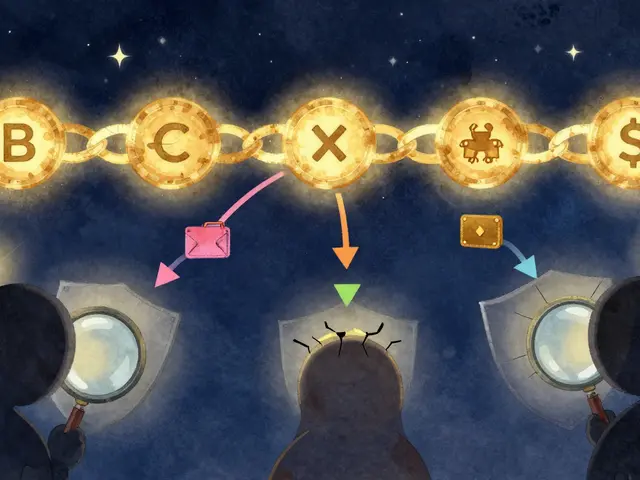Low-Value Token: What It Means and Why It Matters
When talking about Low-Value Token, a cryptocurrency with minimal market cap, limited utility, and often fleeting hype. Also known as cheap token, it usually shows up in fast‑moving airdrop campaigns and can lure newcomers with promises of quick gains. Understanding its core traits helps you separate genuine projects from hype‑driven scams.
Key Traits of an Airdrop Token
Airdrop tokens are distributed free or for minimal effort, aiming to boost community size. Airdrop Token, often carries low intrinsic value because the distribution floods the market. These tokens rely on hype spikes and can be a gateway into low‑value token ecosystems. Their success hinges on viral marketing, but the rapid supply surge usually drags price down, making them a classic example of a low‑value token in action.
Scam tokens take a darker route. Scam Token, is a fraudulent coin designed to disappear after attracting investors. They exploit the same buzz that airdrop tokens generate, but add false promises, fake partnerships, and manipulated charts. When a scam token surfaces, it often inflates the perceived risk of the entire low‑value token market, pushing uninformed traders into costly mistakes.
Stablecoins provide an interesting contrast. Stablecoin, is a digital asset pegged to a fiat currency or basket of assets. While stablecoins aim for price stability and real‑world use cases, low‑value tokens chase speculative spikes without a reliable backing. This comparison highlights how tokenomics—supply, utility, and backing—directly affect perceived value.
Tokenomics is the backbone of any crypto project. For low‑value tokens, the combination of ultra‑high supply, vague utility, and limited roadmaps leads to volatile price swings. Projects like VERSE, OZONE, or XTUSD often illustrate these patterns: they launch with ambitious narratives, but their economic models lack depth, keeping market caps low and investor confidence shaky.
Regulatory scrutiny adds another layer. Many jurisdictions now monitor airdrop and scam token activities, requiring disclosure and anti‑money‑laundering checks. Understanding the legal environment helps you gauge whether a low‑value token could face sudden delistings or bans, further affecting its already fragile value.
Here’s a quick checklist to spot risky low‑value tokens: 1) Check market cap—if it’s in the low thousands, beware. 2) Look for clear utility—vague or buzz‑only descriptions are red flags. 3) Verify token distribution—mass airdrops often dilute value. 4) Research the team—anonymous or unverified developers increase scam risk. 5) Review tokenomics—high supply with no burn or lock‑up mechanisms usually means low long‑term worth.
Armed with these insights, you’ll find the articles below a handy toolbox. They dive deeper into specific airdrops, token analyses, and safety tips, giving you concrete steps to navigate the low‑value token landscape without falling for the hype.
CAKEBANK Airdrop Details: How to Join and What to Know
Explore the reality behind the CAKEBANK airdrop, learn how legit airdrops work, verify claims, and get a step‑by‑step checklist to stay safe.





